Software Life Cycle
| Describe in detail the Waterfall Life Cycle Model and list the advantages and disadvantages of the model (include a diagram to support your understanding). |
|---|
|
The waterfall method is used for fast and simple projects. Only one stage can be worked on at a time and only completed once. Once a stage has been completed you need to evaluate it. 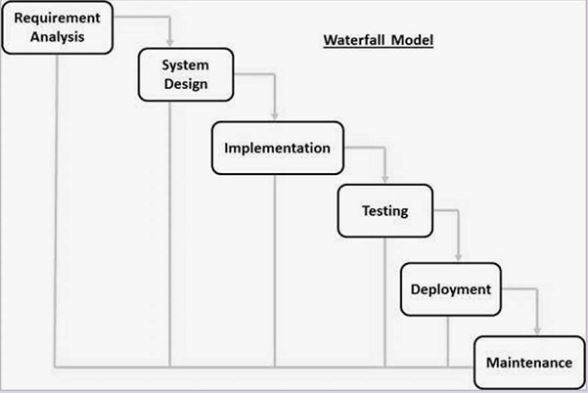
The stages: • Requirements • Analysis • Design • Coding • Testing • Operations The Advantages: • Self-contained steps are easy to manage • Defined process and output per step. • Good model for managing large groups of developers working in parallel. The Disadvantages: • Requirement changes means going back to an earlier stage that already has been completed. • Changes can be costly in money and time. • Lack of customer involvement after analysis means issues are not highlighted until evaluation |
| Describe in detail the Spiral Life Cycle Model and list the advantages and disadvantages of the model (include a diagram to support your understanding). |
|---|
|
The SLCM develops the software in iterative stages(repeating)and after each run through a prototype is made which, through time, keeps refining the software. The model is used for large projects. 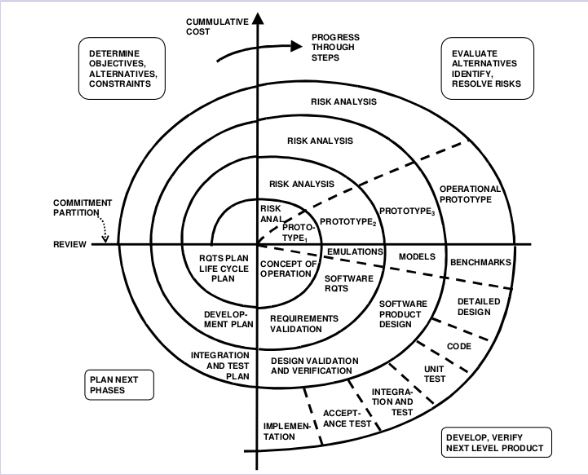
The stages: • Analyse • Design • Implement • Evaluate The Advantages: • Well defined steps in the process make it easy to manage • Interim prototypes highlight issues quickly so that the end product is more likely to be what the customer wants. • Iterative nature of the process means changes can be easily incorporated as feedback is received The Disadvantages: • It takes time to build prototypes and get feedback, so it takes longer to get the product to the customer. • Longer time scale means it costs more to develop. |
| Describe in detail the Spiral Life Cycle Model and list the advantages and disadvantages of the model (include a diagram to support your understanding). |
|---|
|
Describe in detail the Cyclical Life Cycle Model and list the advantages and disadvantages of the model (include a diagram to support your understanding). 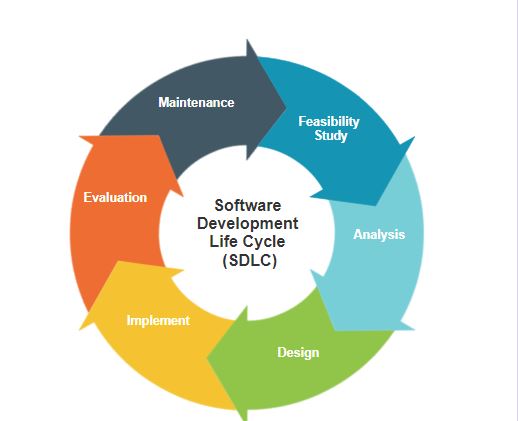
The stages: • Feasibilty Study • Design • Implement • Evaluate • Maintenance The Advantages: • Self-contained steps are easy to manage • Good model for targeting large groups of developers working in parallel • Defined processed and output per step • Maintenance, logically starts the next cycle of the process so it maps better onto the real lifecycle of a complex piece of software. The Disadvantages: • Changes can be costly in money and time • Lack of customer involvement after analysis means issues are not highlighted until evaluation |
| Describe in detail the Spiral Life Cycle Model and list the advantages and disadvantages of the model (include a diagram to support your understanding). |
|---|
|
This model is a strict model. This model is an extension of the waterfall method. As its very strict you can only start the next phase only after completion of the previous phase. 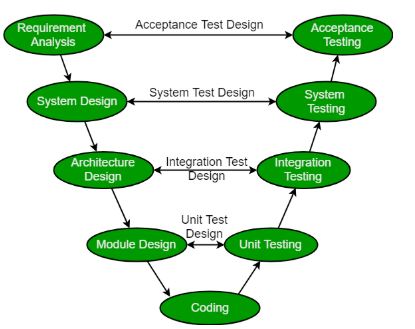
The Advantages: • Highly disciplined, completed one phase at a time. • Simply and easy. • In projects requirements are known and understood, this method works well. The Disadvantages: • Not ideal for complex projects. • Lengthy projects. • No working applications are produced until late in the cycle. |
| Describe in detail the Spiral Life Cycle Model and list the advantages and disadvantages of the model (include a diagram to support your understanding). |
|---|
|
This method was made by James Martin to create a better approach for rapid development. This is less focused on planning and more focused on practical. This process is used to rapidly create prototypes and iterations of the product. It is easily adjusted and most likely to spot errors early on. 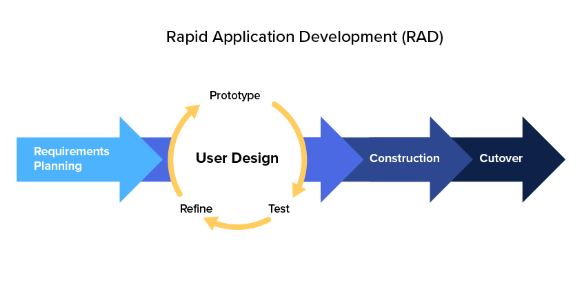
The Advantages: • Easily able to make adjustments during the development process. • Encouraged to reuse code so less time is used to code. • Decreased surprises as integrations are early on in the process. The Disadvantages: • Used for larger projects. • Not every project is compatible with this method. • If developers are not committed, RAD projects can fail. |
| Describe in detail the Spiral Life Cycle Model and list the advantages and disadvantages of the model (include a diagram to support your understanding). |
|---|
|
The agile method is used differently with every project. An iterative approach is taken with this method. 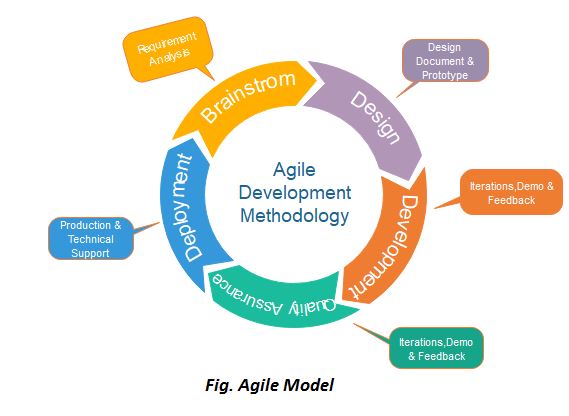
The Advantages: • This method is tailored best to suit your projects needs. • Can be used in a rapid development process. • Hardly any planning needs doing. The Disadvantages: • Needs customer interaction, if customer isn't clear the team can be sent in the wrong direction. • Due to lack of documentation, Transferring new members to technology may be challenging. • Higher risk of sustainability, maintainability and extensibility. |
| How is the Agile Model Different to the Spiral Model? | |
|---|---|
| Agile Method | Waterfall Method |
|
• Not ideal for small projects • Expert needs to make decisions • Compared to other methods, this costs a little more • If the manager isn't clear the project can go off tracts. |
• Not ideal for large projects • If requirements are not clear at the start, the method becomes less effective • Very difficult to backtrack to make change in the previous phases. • Testing only starts upon completion of development. |
| Explain three advantages of prototyping? |
|---|
|
Testing the products to find problems within the design during this process can be helpful to improve the overall quality and usability when the product launches. You can improve the efficiency of the design by creating it and using it finding little errors or big ones to improve it. You can easily show consumes what they are expecting so they can think about pre-ordering or just ordering for a bigger profit. |
| Explain three disadvantages of prototyping? |
|---|
|
This is time-consuming and costs a lot, especially if your in a tight budget it means a large amount of money will be put into this and if the design is flawed it can prevent further investment from bigger corporations. Prototyping may limit the potential from the designers as there is a limited space to work with this can decrease motivation employees as they cannot expand their ideas and designs. If the employees skill set is limited, it is hard to estimate when the prototype will be finished and how difficult it will be. |
| In what particular situations would you use the following models most likely to be used? | |
|---|---|
|
Waterfall Life Cycle Model |
When requirements are well known, clear and fixed. |
|
Rapid Application Development Model |
You would use this on projects that can be split up into separate modules. |
|
Spiral Model |
When a project is large and there has to be frequent updates |
|
V-Model |
Small projects where requirements are clearly defined. |